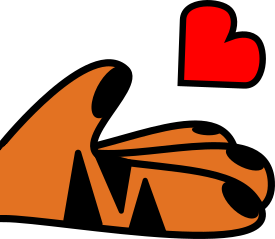Facing a group of six middle school students, Ted Gudmund-sen, '07 hands out five sticky mailing labels, a 10-foot string, 15 straws, 27 toothpicks, and tells them that they have five minutes to build a tower as high as possible. While most children attempt to build from the ground up, the occasional creative problem-solver would think to attach the string to the ceiling.
To encourage such out-of-the-box thinking, Gudmundsen has organized nine other Princeton students into coaching between five and eight Odyssey of the Mind (OM) teams at intermediary and middle schools in Lawrence Township.
The students, in groups of five to seven members, will take part in the world's largest creativity program, working on projects that emphasize both engineering and creativity skills in preparation for regional competition in March.
"I really believe passionately in this program," said Gudmundsen. "I think it will be rewarding."
According to Gudmundsen, OM competition has two parts, a longterm problem and a spontaneous problem.
In the longterm problem, students in the recent past have built structures out of balsa wood and glue that weigh no more than 18 grams but can support more than half a ton.
But the problem does not only require engineering thinking. Gudmundsen noted that students still have to do an eight-minute skit to display their solution.
"You still have to present style in some way," he said.

Similarly, in problems based on performance, students must still learn the mechanics of building sets and backdrops.
"You're never judged on the professionalism of your solution," he added. "You're judged on the creativity."
In the second, spontaneous half of OM, students face either a verbal or a hands-on problem they have never seen before and solve it within a limited time. For example, if asked to name different types of "keys," a student may receive one point for naming the key that opens a door.
"That's a common answer," Gudmundsen said. "But if you say 'the Florida Keys,' you might get three points. That's creative."

Gudmundsen himself did OM for seven years and has always wanted to coach.
"We are in the era of standardized tests," he said, explaining the program's importance. "But what are kids actually going to use in the real world?"
From basic living skills like sewing and building to complex social skills like leadership and teamwork, OM offers kids experiences that school cannot, according to Gudmundsen. Moreover, kids that struggle in the orderly restrictions of a classroom often succeed when allowed more space for creativity.
"Teachers don't always have time to reward thinking outside the box," said Gudmundsen. "You have to harness the abilities that you find off-topic and unproductive. OM can capture kids the classroom can't."
Teams that succeed regionally will advance to state and possibly international competition, held this year in Colorado. Although Gudmundsen said he hopes that at least one of the six teams that he helped organize will advance to state, he stressed that competition is not the point.
"[Competition] focuses the kids, it focuses the coaches," he said. "But the point is what happens to get to competition."
Working loosely with the Student Volunteers Council, Gudmundsen has recruited coaches, convinced school principals and stimulated interest in the community. Though the organization is not currently recognized as a University club, he still hopes to inspire others to help coach.
"This is where you learn what people are made of," he said. "This is how we create competent leaders for tomorrow."







